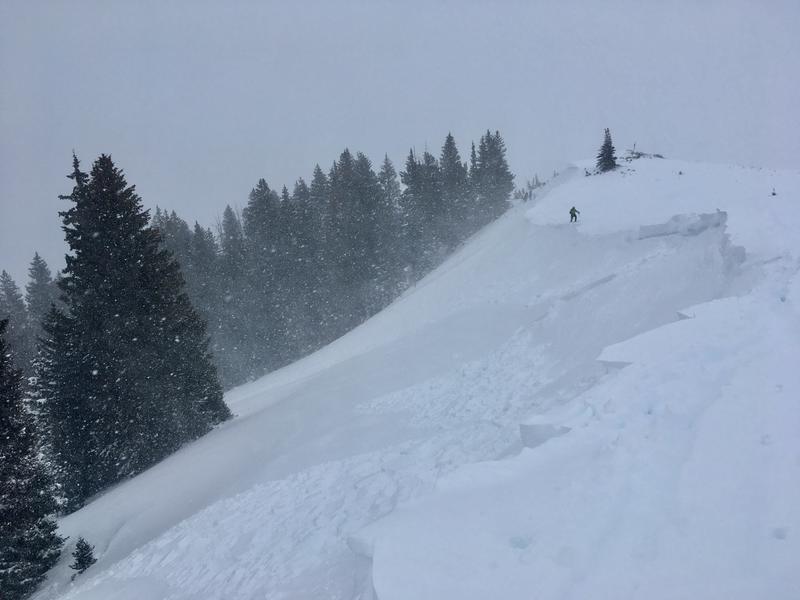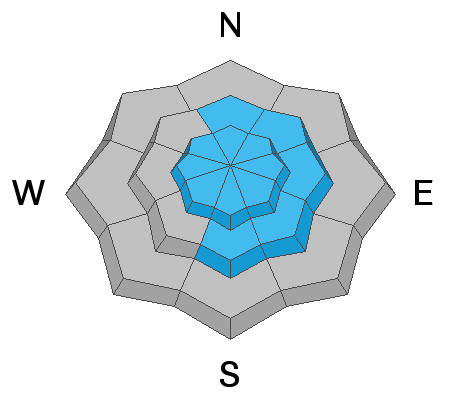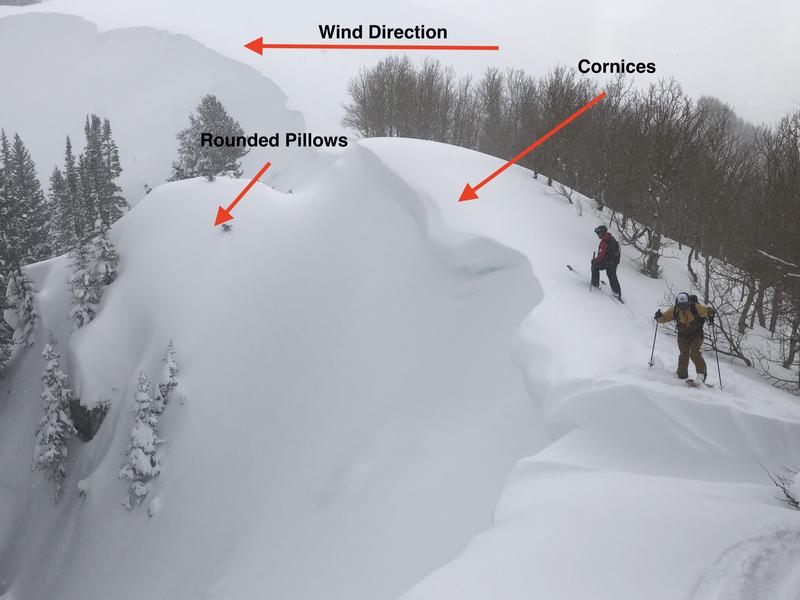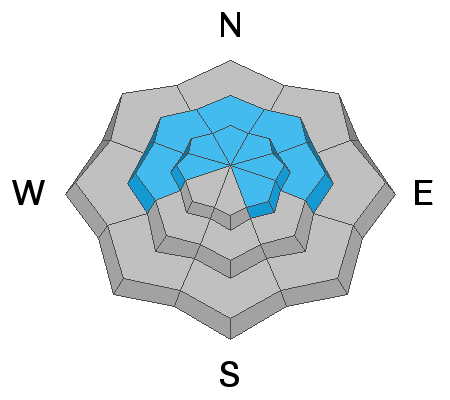On Friday, a skier was killed in an avalanche near Electric Lake on the Manti/Skyline Plateau. Their body was recovered Saturday morning. You can read the updated report - including photos and video from the accident site - by clicking
here. The UAC extends our deepest condolences to their family and friends.
An impressive cold front arrived in the Salt Lake mountains around sunrise on Monday, with very heavy snowfall and strong winds lasting through most of the day, with snowfall rates at times a staggering 4-5"/hour. Storm totals are 1 - 2', with 1 - 1.5" of water weight. The highest storm totals are in upper Little Cottonwood, which typically fares the best with a northwest flow, but even mid elevations at 8000' received about a foot of new snow.
Temperatures this morning are in the single digits, but as my Dad used to say, at least the wind is blowing. Northwest winds picked up mid-day on Monday, and have been gusting generally in the 20’ and 30’s mph, but a few windier at about 10,500’ have had gusts in the 40’s. At 11,000' winds have been gusting in the 60’s. Fortunately winds are forecasted to diminish during the day, with mid elevations gusting in the 20's mph, and upper elevations in the 30's and low 40's. Temperatures will be in the teens with partly cloudy skies.
Winds are forecasted to increase overnight, ahead of a weak system which should deliver a few inches of snow later Wednesday. Another similar weak system is possible this weekend.
There was widespread natural avalanche activity yesterday, especially during the height of precipitation around midday. These were both storm slabs and long-running sluffs in the new snow. Human triggered avalanches were also reported, including very sensitive storm and wind slabs 1-2’ deep and 50’ wide (
excellent observation by Grainger/Young). At the onset of the storm early yesterday, two skiers unintentionally triggered an avalanche on south-facing Emma Ridge and were briefly caught and carried, with fortunately no injuries (
observation).
The south-facing slide paths of Little Cottonwood Canyon put on quite a show, with numerous slides from control work, but also natural avalanches.
With partial clearing today, we hopefully will get a better sense of the extent of yesterday's avalanche activity. [pc: Grainger]













